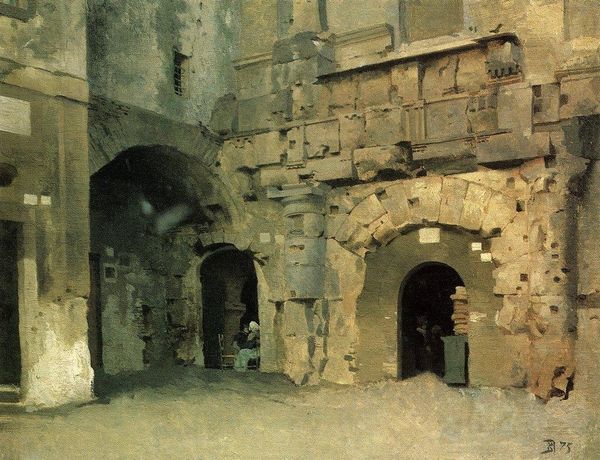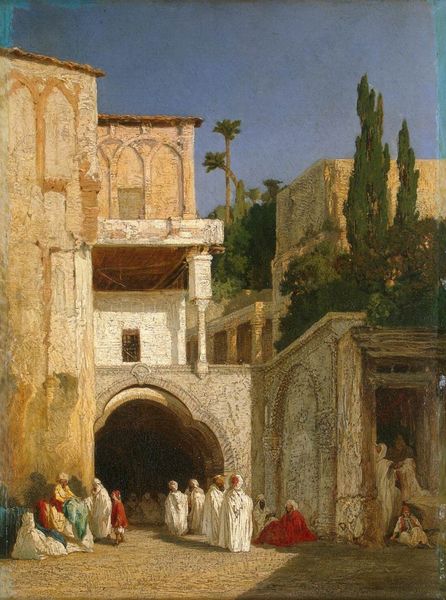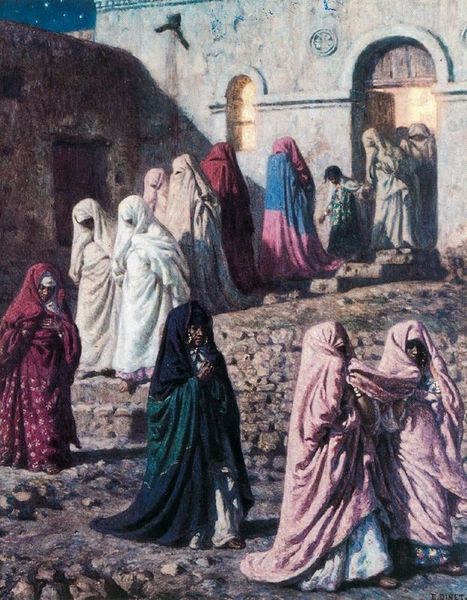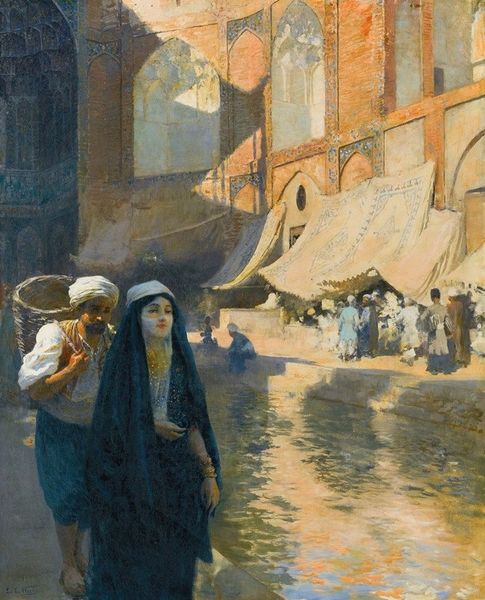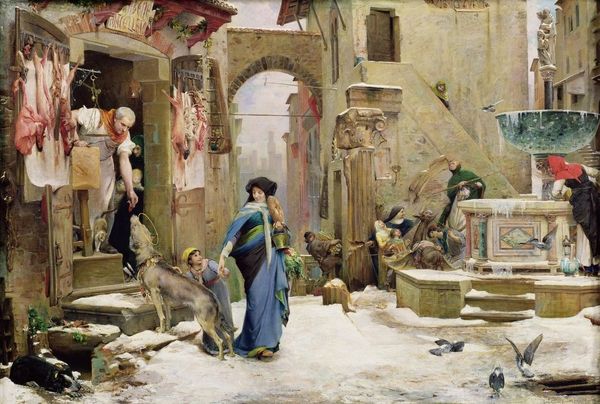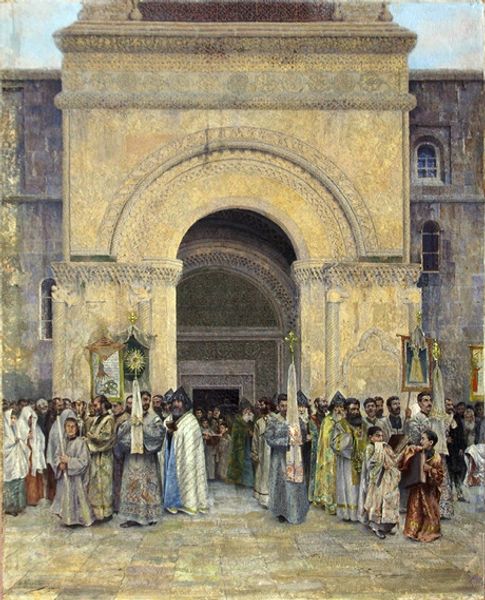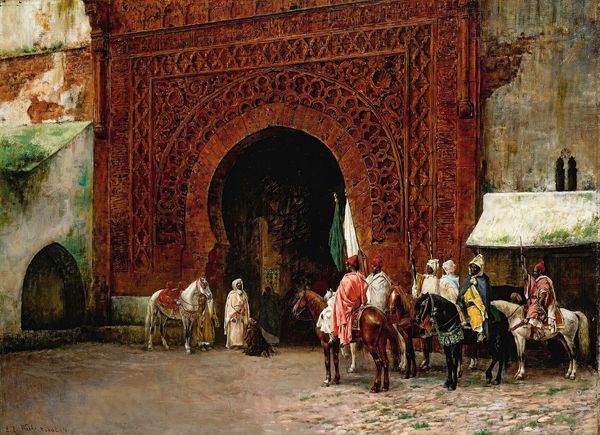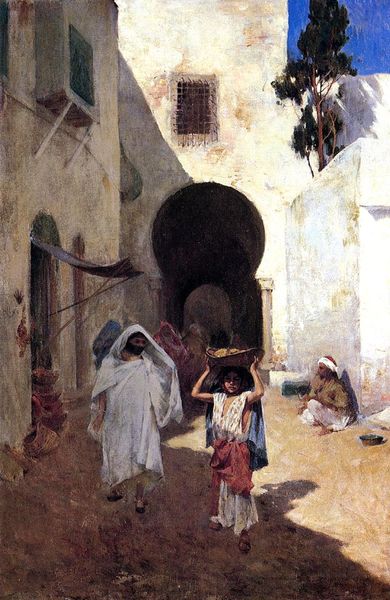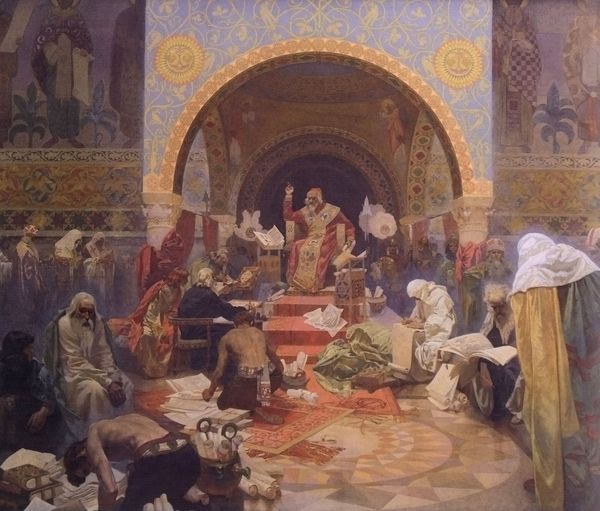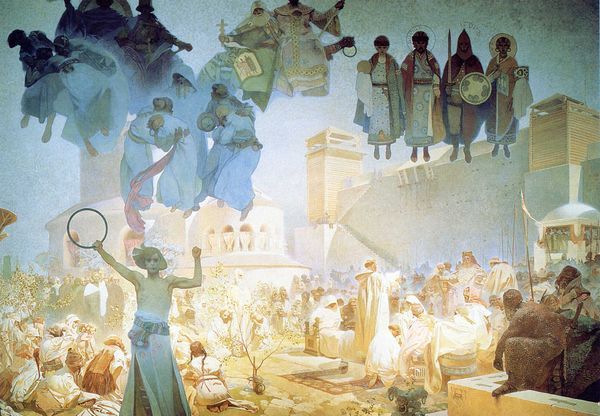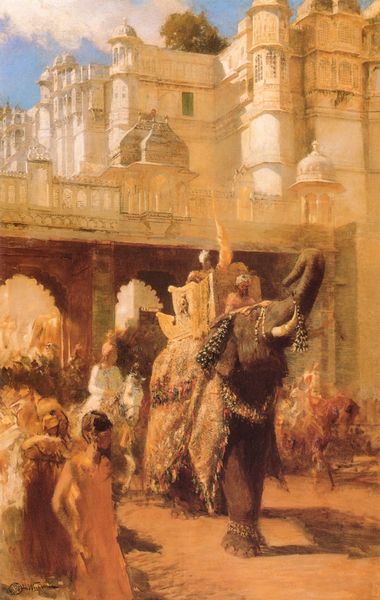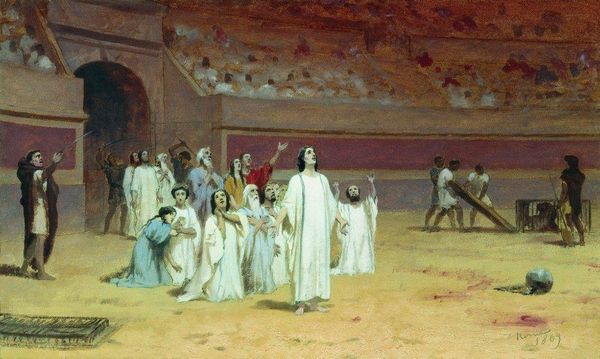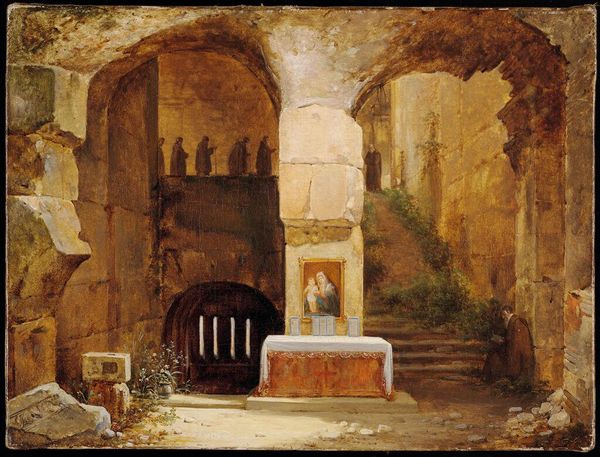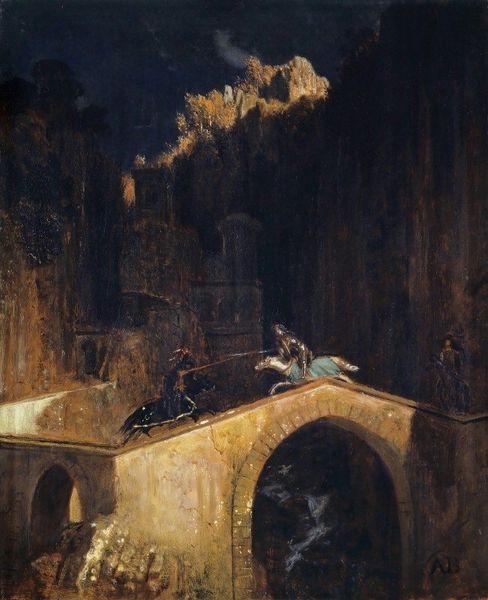
painting, oil-paint
#
urban landscape
#
painting
#
impressionism
#
oil-paint
#
landscape
#
painted
#
oil painting
#
orientalism
#
genre-painting
Copyright: Public domain
Curator: The scene feels instantly dreamlike, wouldn't you say? The pale tones, the indistinct figures...it evokes such a strange feeling of detachment. Editor: Indeed. What you're seeing is Vasily Vereshchagin's 1885 oil on canvas titled "In Jerusalem. Royal tombs". It's part of a series Vereshchagin did on the Middle East, reflecting his experience of being there as an orientalist painter. Curator: Orientalism, yes, of course. It does frame the way we are meant to look at the figures who are, after all, at the doorway of royal tombs. Editor: Quite right, those figures swathed in white create a focal point drawing our eye upwards. The composition, although fairly straightforward, really uses the massive stone arch as a framing device. See how it dwarfs everything below it? Curator: The textures are rather fascinating. That contrast between the rough, almost decaying stone of the archway, and the luminous smoothness of the figures’ robes. It makes them appear ethereal, almost otherworldly, against that rugged backdrop. Editor: Precisely. Vereshchagin often explored the effects of light, and the way it defined space. Though remember he presented war and its aftermath more than spirituality in his Russian-Turkestan series. Here though the figures' garments, they speak volumes about ritual, and tradition... maybe even a sense of solemnity of royal figures who long passed away. Curator: Right, Vereshchagin certainly moved between the political, war, and other genre settings, particularly throughout his career and life in locations across the Middle East. In this work there's also an ethnographic component for a European audience to marvel at an imagined and far away world, no? Editor: I think so. While we look closely we find many elements to appreciate from Vereshchagin, so I think you make an astute point. In truth this is something of a crossroads in terms of thinking through how Vereshchagin sees art's mission as capturing different cultural experiences through aesthetic forms and compositions. Curator: The shadows that appear so muted on the left give depth and contrast nicely too. Overall, a rather enigmatic piece I think. Editor: I would certainly agree. It remains a really striking exploration of both texture, color, and the human figure amidst its surrounding environment.
Comments
No comments
Be the first to comment and join the conversation on the ultimate creative platform.
